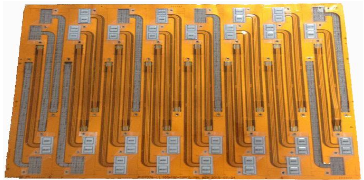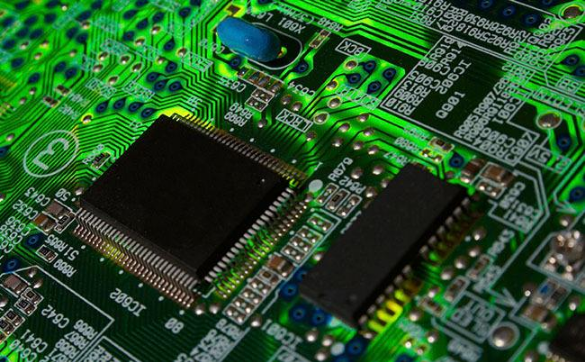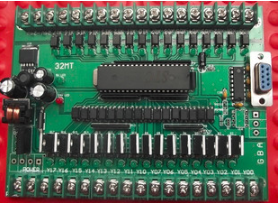
The interconnection of circuit board system includes three types of interconnection: chip to circuit board, interconnection within PCB board, and interconnection between PCB and external devices. In RF design, the electromagnetic characteristics at the interconnection point is one of the main problems faced in PCB engineering. This paper introduces various techniques for the above three types of interconnection design, including device installation methods, wiring isolation, and measures to reduce lead inductance.
At present, there are signs that the frequency of printing design is getting higher and higher. With the continuous growth of data rate, the bandwidth required for data transmission also makes the upper limit of signal frequency reach 1GHz, or even higher. Although this high-frequency signal technology is far beyond the range of millimeter wave technology (30GHz), it does involve RF and low-end microwave technology.
The RF engineering design method must be able to deal with the strong electromagnetic field effects that usually occur at higher frequencies. These electromagnetic fields can induce signals on adjacent signal lines or PCB lines, resulting in annoying crosstalk (interference and total noise) and damaging system performance. The back loss is mainly caused by impedance mismatch, which has the same impact on the signal as additive noise and interference.

High return loss has two negative effects: 1. The signal reflected back to the signal source will increase the system noise, making it more difficult for the receiver to distinguish between noise and signal; 2. Any reflected signal will basically reduce the signal quality because the shape of the input signal changes.
Although the digital system only processes 1 and 0 signals and has very good fault tolerance, the harmonic generated when the high-speed pulse rises will cause the higher the frequency, the weaker the signal. Although the forward error correction technology can eliminate some negative effects, part of the system bandwidth is used to transmit redundant data, which leads to the degradation of system performance. A better solution is to make RF effect contribute to signal integrity rather than damage it. It is recommended that the total return loss at the highest frequency (usually the poor data point) of the digital system is - 25dB, which is equivalent to a VSWR of 1.1.
The goal of PCB design is smaller, faster and lower cost. For RF PCB, high-speed signals sometimes limit the miniaturization of PCB design. At present, the main way to solve the crosstalk problem is to manage the ground plane, space the wiring and reduce the lead inductance. The main method to reduce return loss is impedance matching. This method includes the effective management of insulating materials and the isolation of active signal lines and ground wires, especially the separation between the signal lines with state jump and the ground.
Pcb design
As the interconnection point is the weakest link in the circuit chain, the electromagnetic property at the interconnection point is the main problem faced by the engineering design in RF design. It is necessary to investigate each interconnection point and solve the existing problems. The interconnection of circuit board system includes chip to circuit board, interconnection within PCB board and signal input/output between PCB and external devices.
Interconnection between chips and PCB boards
Pentium IV and high-speed chips containing a large number of I/O interconnect points have been introduced. As far as the chip itself is concerned, its performance is reliable, and the processing speed has reached 1GHz. At the recent GHz Interconnection Workshop, the most exciting thing was that the way to deal with the growing number and frequency of I/Os was widely known. The main problem of interconnection between chips and PCBs is that too high interconnection density will cause the basic structure of PCB materials to become a factor limiting the growth of interconnection density. At the meeting, an innovative solution was proposed, that is, using the local wireless transmitter inside the chip to transmit data to the adjacent circuit board.
No matter whether this scheme is effective or not, the participants are very clear: in terms of high-frequency applications, IC design technology has been far ahead of PCB design technology.
pcb
PCB internal interconnection
The skills and methods of high-frequency PCB design are as follows:
1. 45 ° angle shall be adopted for transmission line corner to reduce return loss;
2. High performance insulated circuit boards with strictly controlled insulation constant values shall be used. This method is conducive to effective management of electromagnetic fields between insulating materials and adjacent wiring.
3. Improve PCB design specifications for high-precision etching. Consider that the total error of the specified line width is+/-0.0007 inches, manage the undercut and cross section of the wiring shape, and specify the electroplating conditions of the wiring sidewall. The overall management of wiring (wire) geometry and coating surface is very important to solve the skin effect problem related to microwave frequency and realize these specifications.
4. There is tap inductance in the protruding lead, so avoid using components with leads. In high-frequency environments, surface mount components are preferred.
5. For signal vias, avoid using the via processing (pth) process on the sensitive plate, because this process will cause lead inductance at the vias. If a via on a 20 layer board is used to connect layers 1 to 3, the lead inductance can affect layers 4 to 19.
6. Abundant ground plane shall be provided. The molded holes shall be used to connect these grounding layers to prevent the influence of 3D electromagnetic field on the circuit board.
7. The non electrolytic nickel plating or gold immersion plating process shall be selected, and the HASL method shall not be used for electroplating. The electroplating surface can provide better skin effect for high-frequency current. In addition, this highly weldable coating requires fewer leads, which helps reduce environmental pollution.
8. The solder mask prevents the solder paste from flowing. However, due to the uncertainty of thickness and the uncertainty of insulation performance, covering the entire plate surface with solder resistance materials will lead to a large change in electromagnetic energy in microstrip design. Solder dam is generally used as the welding barrier.
If you are not familiar with these methods, you can consult an experienced design engineer who has been engaged in military microwave circuit board design. You can also discuss with them the price range you can afford. For example, the copper clad coplanar microstrip design is more economical than the stripline design. You can discuss this with them to get better suggestions. Good engineers may not be used to thinking about cost, but their advice is also quite helpful. Now we should try our best to train young engineers who are not familiar with RF effect and lack experience in dealing with RF effect, which will be a long-term work.
In addition, other solutions can be adopted, such as improving the computer model to make it have RF effect processing capability.
Interconnection between PCB and external devices
Now we can think that we have solved all the signal management problems on the board and on the interconnection of various discrete components. How to solve the signal input/output problem from the circuit board to the wire connecting the remote device? Trompeter Electronics, the innovator of coaxial cable technology, is committed to solving this problem and has made some important progress.
In addition, take a look at the electromagnetic field given in the pcb. In this case, we manage the conversion from microstrip to coaxial cable. In coaxial cables, the ground layers are annular interlaced and evenly spaced. In the microstrip, the ground plane is below the active line. This introduces some edge effects that need to be understood, predicted and considered in design. Of course, this mismatch will also lead to return loss. This mismatch must be minimized to avoid noise and signal interference.
The management of impedance problem in circuit board is not a design problem that can be ignored. The impedance starts from the surface layer of the circuit board, then passes through a solder joint to the connector, and finally ends at the coaxial cable. Since impedance varies with frequency, the higher the frequency, the more difficult it is to manage impedance. The problem of using higher frequency to transmit signals on broadband seems to be the main problem faced in the design.









